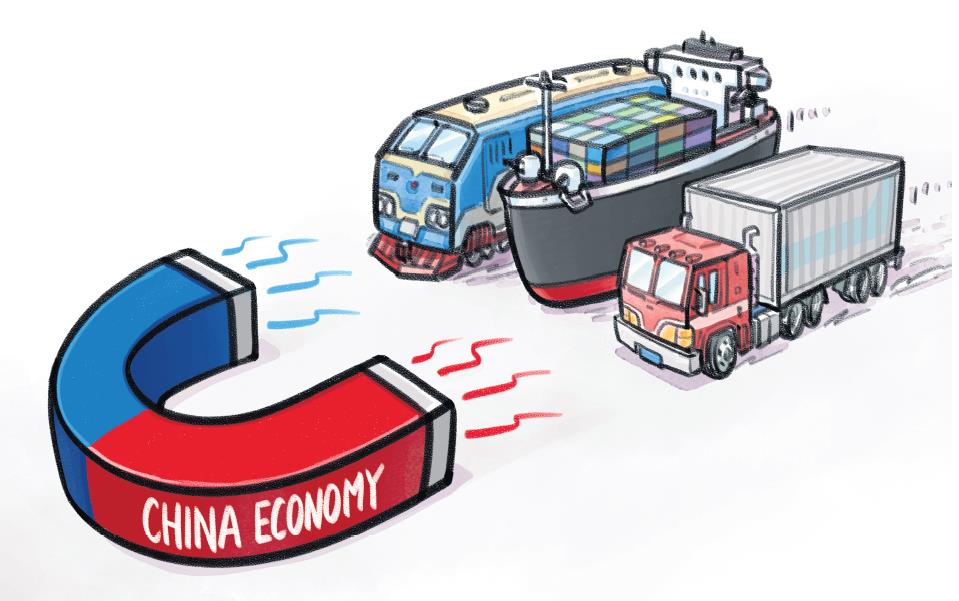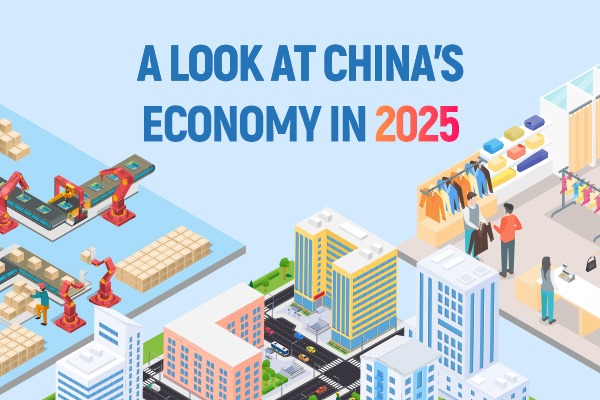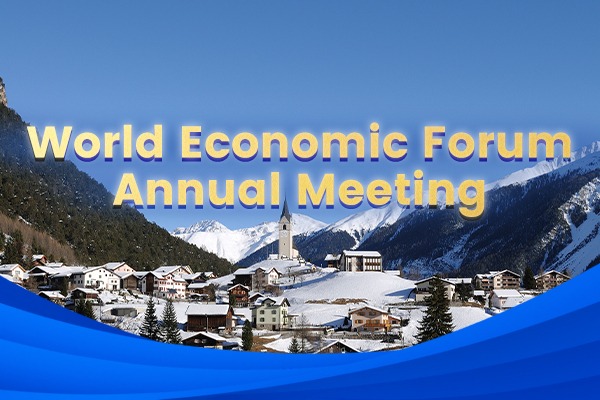China can ride evolving global industrial layout


The Sino-US trade frictions and the COVID-19 pandemic have accelerated the reconstruction of the global industrial chain. Some Western economies, led by the United States, have been stepping up attempts to relocate some key industries from China.
But, foreign companies are unlikely to abandon the Chinese market in a hurry, given its huge potential. China remains the center of global industrial chain.
Whether or not a foreign company relocates from China does not really depends on what politicians think. An industry expert who has been dealing with foreign companies for a long time said that amid the epidemic, some foreign executives' (and their boards') first concern was whether or not their cash flow would support survival.
They believe the focus of the global supply chain continues to be on China. As the Chinese market has great potential, they don't have any intention to move away from the country.
China was the first country to be hit hard by the epidemic, but it also not only survived the epidemic but rebounded as quickly as possible. The country has introduced various supportive measures to help enterprises resume work and production.
Instead of leaving China, some multinational companies even increased their investment in the country. For instance, Honeywell International Inc recently established a branch in Wuhan, Hubei province; food giant Nestle invested 730 million euros ($822 million) and expanded its food factory in Tianjin; Volkswagen Group continues to promote electrification efforts in China and recently increased its stake in Anhui Jianghuai Automobile Group Holdings.
For these companies, the key factor to consider whether or not to move out of China was the nature of their foreign funding and their own position in the industrial chain in China.
There are three main concerns for them. One, domestic and international political sentiment. Two, the possibility of decoupling between China and the US, especially in the field of science and technology. Three, given the uncertain political situation in the US, foreign investors' concern as to what the kind of information will transfer to their domestic and business communities from their investment in China.
That depends on the overall advantages or attractiveness of the Chinese market. An obvious reference is that over the past decade, the size of China's consumer market tripled from $2.6 trillion in 2009 to $8 trillion in 2019. Correspondingly, the size of the US market has increased from $12.3 trillion to 17.6 trillion. Although the Chinese market is only half the size of the US, we can see its growth potential.
Coupled with the complete development of China's labor, technology, capital, data, infrastructure, and their close links with the world, no other country can match China in the global industrial chain.
In addition, China remains strong in terms of economic resilience. China is the first country to recover from the Global Financial Crisis in 2008-09 and now COVID-19-a sort of feat unmatched by any other country.
However, China needs to see that the Sino-US trade friction and COVID-19, to a certain extent, led to the counter-globalization trend. In the long run, many companies are faced with cost pressures and possible technological blocks. Political considerations and such uncertainties may force them to make relocation choices.
But we should not worry too much about the restructuring of the industry chain. To be sure, over the past decade, the global industrial chain has been restructuring. It is structural adjustments, not political factors, that drive this process. This structural adjustment is an inevitable result of sound economic development.
Looking back to past years, China's industrial chain has been continuing to evolve and relocate. The first shift was in labor-intensive industries. Owing to factors including rising labor costs and environmental costs, many companies in China had relocated over the past decade to Southeast Asia or other low-cost countries.
The trend continues. From 2007 to 2018, the share of clothing exports from Southeast Asian and South Asian countries to the rest of the world rose from 2.9 percent to 18.5 percent.
The second round of industrial relocation occurred after the Sino-US trade frictions erupted. This mainly involved some industrial chains dominated by the US market. A UBS survey revealed that they transferred their assets mainly to Southeast Asian countries such as Vietnam, Malaysia, and the Philippines.
Only 7 percent of them transferred back to the US. It is foreseeable that unless tariffs fall, such supply chain companies will not return to China.
These two types of industrial transfers are the inevitable result of the structural adjustment of the domestic industrial chain. In general, this structural adjustment is benign and there is no need to worry too much.
In the future, two major trends will have a systemic impact on the reconstruction of the global industrial chain.
First is that amid the epidemic, which is a global public health crisis, China and the US will likely realize that strengthened bilateral cooperation is the only sensible way forward. However, the relationship between the two sides has become tense of late.
The mistrust between the two sides has expanded to medical equipment, infrastructure and other fields. In the long run, if this mistrust continues unabated, it could damage the economic relationship between the two sides, accelerate the decoupling of the industrial chain, and even form a vicious circle.
Second, if China continues to maintain medium or high economic growth and climbs to the upstream of the global industrial chain, it may maintain its leading position in some fields. In which case, its companies will likely find themselves in direct competition with counterparts from other leading countries and regions, including the US, Japan and Europe.
China will face more pressure from the Western world. In such a scenario, the existing globalization system may face the risk of disintegration, and the global economic model may undergo strategic reorganization, which will undoubtedly have a fundamental impact on the reconstruction of the global industrial chain.
Amid such uncertainties and pressures, China may seek an important role in the global industrial chain. Toward that end, the first thing that China must do is help the economy to recover as soon as possible from the epidemic.
Second, China must adhere to reform and opening-up, boost the investment and business environment, allow all types of market players to compete fairly, and reduce policy uncertainty.
Third, and most importantly, China must increase the reform of the factor market (where enterprises buy the factors of production or the resources they need to produce their services or goods).
The last thing that China should do, rather should not do, or avoid altogether, is kicking foreign high-tech enterprises out of China merely in tit-for-tat against the US.
An important factor to note here is that a new round of globalization, based on artificial intelligence and information technology, has emerged. China should seize the opportunity to vigorously develop 5G, AI, big data, cloud computing, blockchain and other technologies, accelerate the development of industrial internet and drive a new round of globalization.
While seizing development opportunities, China must notice its own shortcomings in the global industrial chain. The country has shortcomings in core technologies and suffers from ordinary reputation of its homegrown brands. Its financial system has limited support for industrial chain transfers and needs to be improved.
In addition, Western countries have dominated the international economic and trade rules almost always, with China at the receiving end. China should actively participate in the formulation and discussion of more international rules, so that domestic rules can be integrated with international rules as much as possible.
This article is adapted from a research report published by the China Finance 40 Forum.
The views don't necessarily reflect those of China Daily.




































